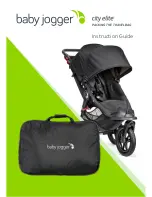
80
RS8GM222 © Danfoss 10-2014
AK-CC 750 - 080Z0130 & 080Z0139
Defrost sequence
Every defrost runs through the following sequence:
- emptying of evaporator (pump down) (state 1)
- defrost is initiated (state 3)
- waiting position (used for coordinated defrost) (state 4)
- drip-off (injection delay) (state 5)
- Pressure equalisation where the drain valve opens (hot gas
defrost only) (state 6)
- fan delay (state 7)
Emptying of evaporator
(state 1)
Before the defrost heating elements are started it is possible to
carry out emptying of the evaporator. During a set time delay, the
valve in the liquid line remains closed, the fans run and the evapo-
rator is drained of refrigerant.
Defrost (state 3)
• Electric defrost
The electric heating elements are activated here.
• Natural defrost
Here, the fans run in order to defrost the evaporator using air
circulation alone.
• Hot gas defrost
Here, the drain valve and suction line valve are closed. The hot
gas valve opens in order to feed hot gas through the evaporator.
• Warm brine defrost
Here, the solenoid valve is held open so that warm brine can be
fed through the evaporator.
Defrost stop
There are four kinds of defrost stop to choose from.
• Individual stop using temperature and with time as security
In the case of electric and hot gas defrost, one output per evapo-
rator is used here, i.e. an individual heating element / hot gas
valve per evaporator.
Example of hot gas usage with individual stop per evaporator
The temperatures of each evaporator are measured using a sen-
sor. When this temperature is then equal to or greater than the
set temperature for defrost stop, defrost stops in the section in
question. The defrost sequence continues only when all sections
have completed defrost.
When there is electric defrost, S5 is normally selected as defrost
sensor, but S3, S4 or S2 may also be selected (S3 is an air sensor
placed in the evaporator inlet, and S4 is an air sensor placed in
the evaporator outlet).
For large evaporators there should be two S5 sensors – S5-1 and
S5-2. The defrost is stopped when both temperatures have at-
tained the set value.
If the defrost time exceeds the set max. defrost time, the defrost
stops. This will happen even if the defrost stop temperature has
not been reached (max. defrost time will function as safeguard).
When the defrost is stopped on time, the alarm message “Max.
def. period exceeded” will appear for the section in question. If
the alarm is not acknowledged within five minutes, it will auto-
matically be cancelled.
When there is an error in a defrost sensor, an alarm appears and
the defrost stop will then be based on time in the relevant sec-
tion. Defrost stop for the remaining sections will still be based on
temperature.
• Common stop using temperature and with time as security
In the case of electric and hot gas defrost, only one output is
used for all evaporators, i.e. one output for heating element /
common hot gas valve.
Example of hot gas usage with common hot gas valve for all
evaporators
The temperatures of each evaporator are measured using a sen-
sor. Once all the evaporator temperatures are equal to or greater
than the set temperature for defrost stop, defrosting is stopped in
all sections and the defrost sequence continues.
The selection of defrost stop sensor as well as the "safeguard"
stop on time if stop temperature can not reached is exactly as
described for individual stop.
•
Stop based on time
A fixed defrost time is set here. When this time has elapsed, the
defrost will be stopped and cooling will be resumed. (When stop
on time the controllers does not check whether one or more of
the evaporators still require defrost.
•
Stop based DI signal
- Stop via a common DI signal
- Stop via an individual DI for each section.
• Manual stop
Defrost in progress can be stopped manually by enabling the
"Stop defrosting" function."
If a signal on forced closing during a defrost is received, the forced
closing status will not appear until the defrost has been finished.
Coordinated defrost
(state 4)
Via a system unit it is possible to perform a group defrost with
other appliance controllers. The system unit will in that case start
a defrost with a start signal via the data communication. When the
















































